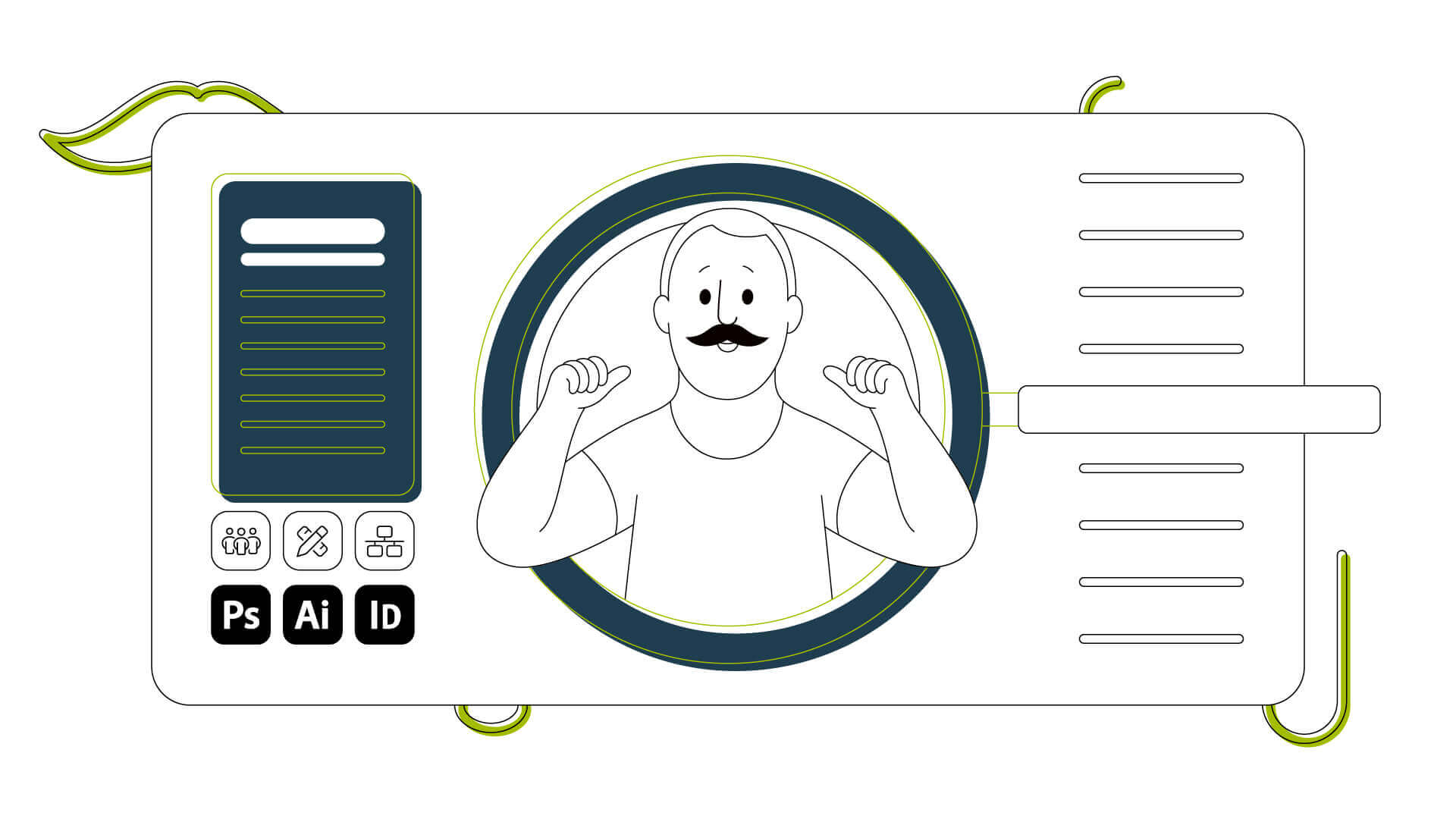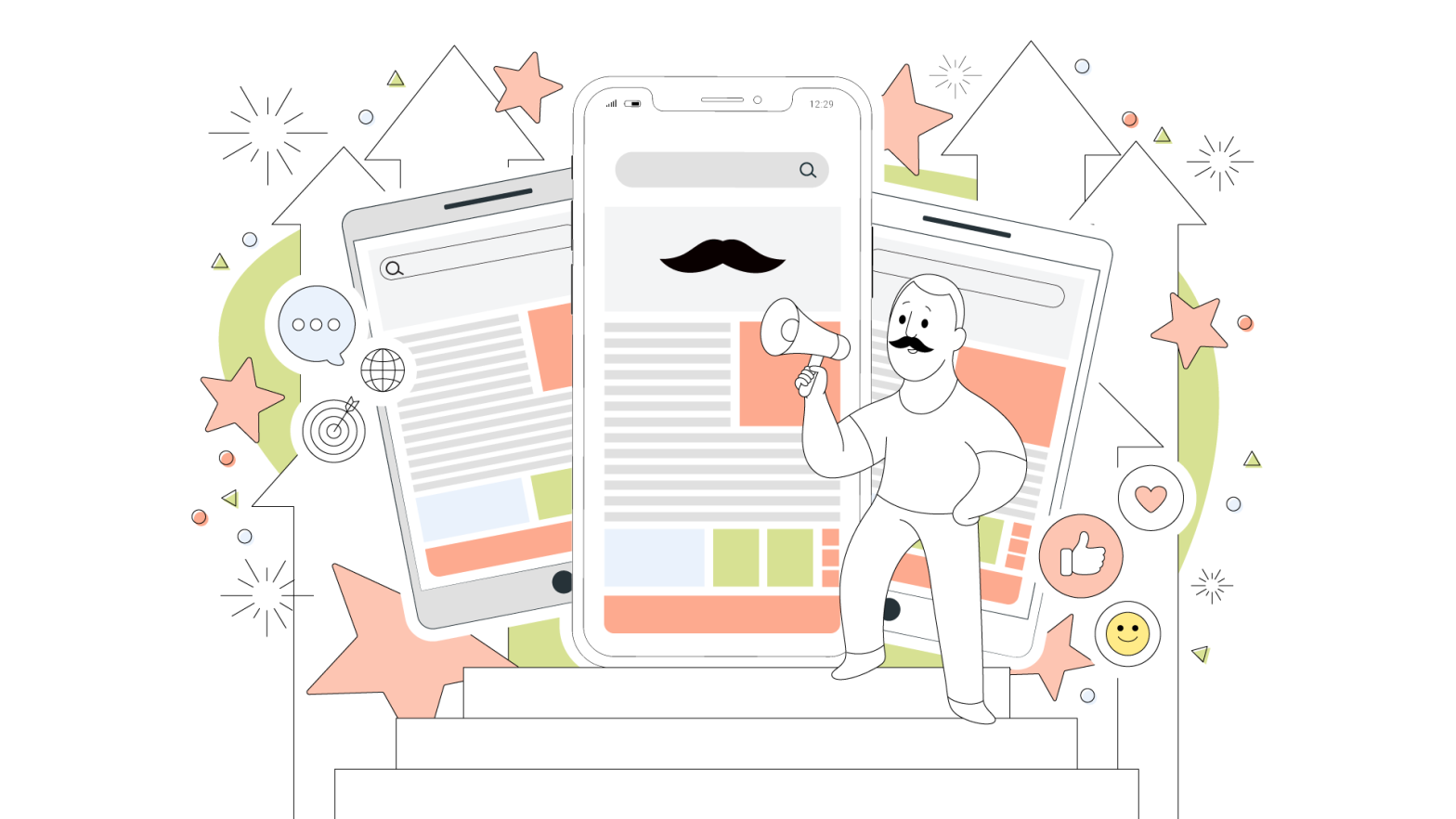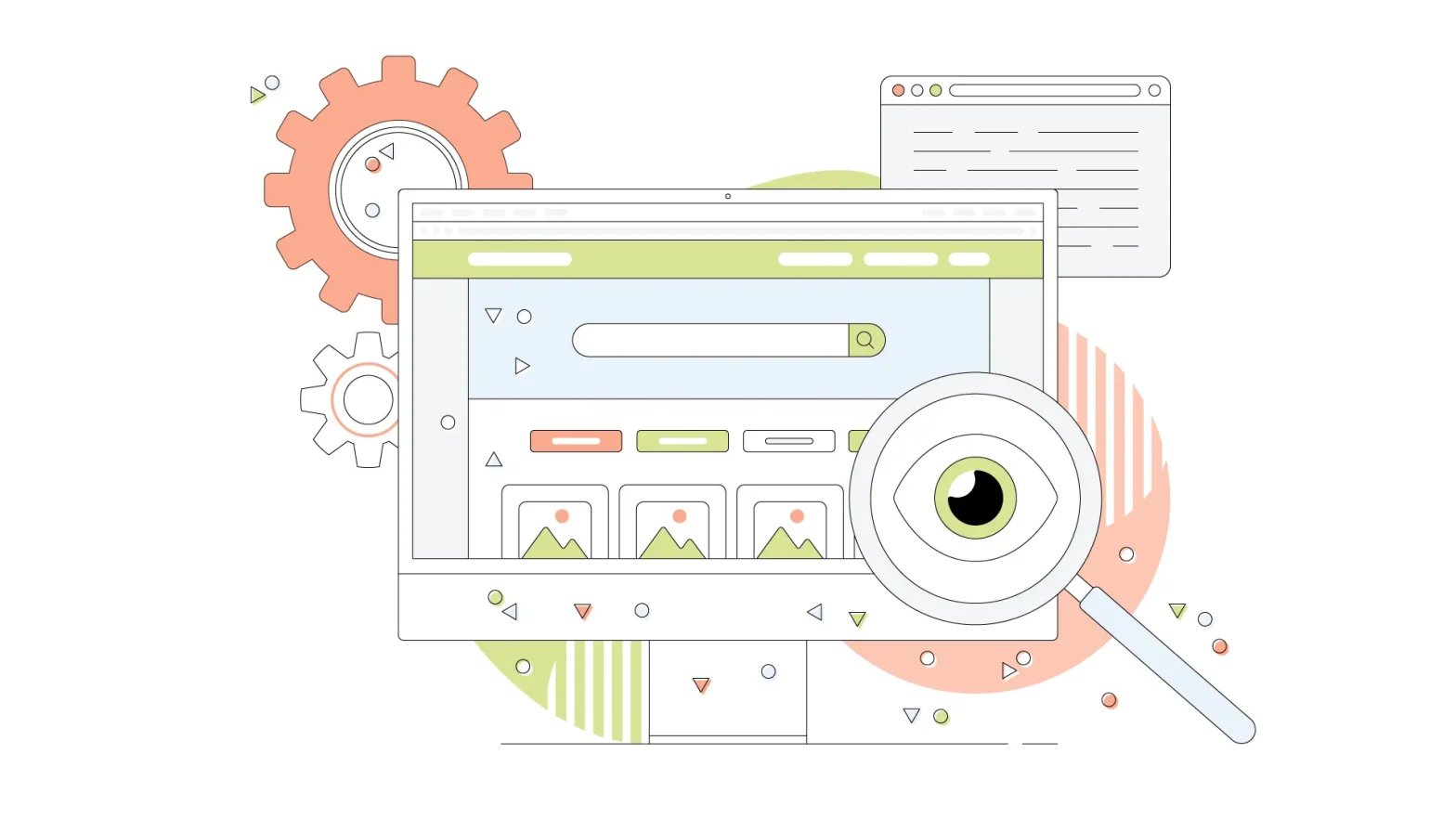Want to jumpstart your freelance design career but don’t know where to start? You came to the right place.
We’ll tell you the areas of design you can choose from, which courses to take to be more capable and versatile, and a few tips on how to become a good freelance graphic designer.
Here are the topics that will be discussed:
- How Do I Become a Good Freelance Graphic Designer?
- What Makes a Good Graphic Designer?
- Are Studies Important for a Freelance Graphic Designer?
- Are There Different Types of Graphic Designers?
- Is Graphic Design a Growing Field?
- What Is the Salary for a Graphic Designer?
Let’s design this together!
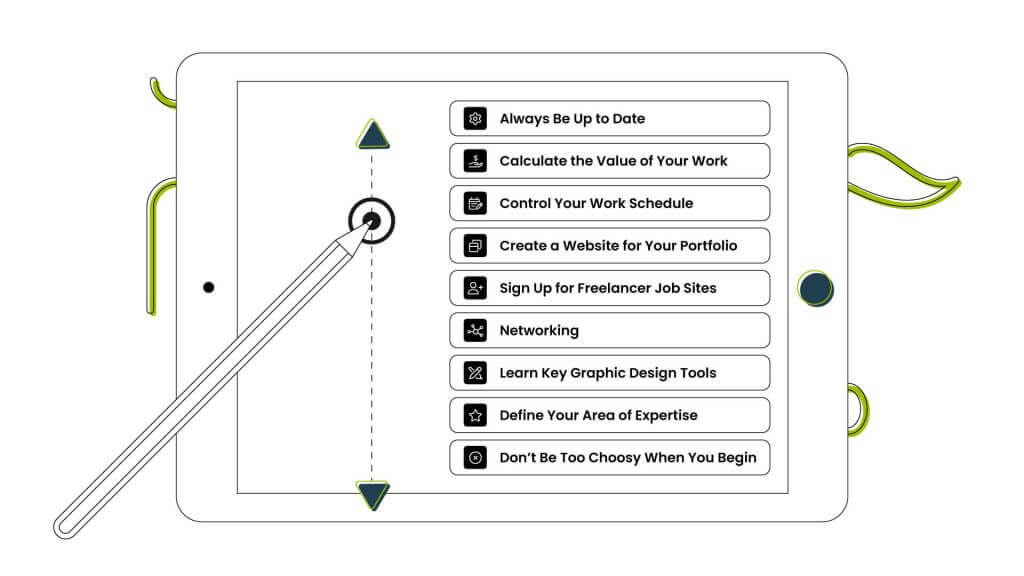
How Do I Become a Good Freelance Graphic Designer?
It’s important to follow some steps to be a successful graphic design freelancer. Even if you’re working on your own, you need to organize yourself to keep delivery deadlines, have a production rhythm and establish some routines.
Below, we’ll give you a few tips on how to become a good freelance graphic designer.
- Always Be Up to Date
Even if you’ve already graduated from a college or university or have certificates from technical courses, you need to keep up with current design trends.
Imagine if you graduated in 2016 – as the writer who is writing this article – and you never took any course to improve a specific technique, you don’t know what kind of design companies are currently looking for and what tools are being used.
You’d be an outdated professional, unprepared for the challenges today’s clients have to deal with. We know that after people graduate, the vast majority don’t even want to get close to a book or have to study again, thanks to the amount of reading done during graduation.
But to stay competitive, take courses, watch videos, read books, and learn about what is happening in the market. Do everything you can always to be one step ahead of other professionals.
- Calculate the Value of Your Work
You already have the knowledge, you’re up to date on what the market is asking for, but you don’t know how much to charge for your work.
Rest assured, all the freelancer graphic designers have been through this. And these are exactly the professionals you need to talk to, they have experience and can easily help you with this doubt.
You can also turn to forums and websites that show you how much you can charge for your work.
We know that at the beginning of your career, charging for a job can give you a feeling of uncertainty, and you might wonder, did I charge too little? Or am I charging too much? This is normal because of your inexperience with freelance work.
Do your research, see the fair value and make your budget.
- Control Your Work Schedule
One of the main advantages of being a freelance graphic designer is establishing when you’re going to work. You can work in the morning, in the afternoon, at night, at dawn. You can even work only a few hours a day. Whatever suits you best.
However, this could be a problem if you don’t know how to organize your deadlines. For example:
Let’s say you’re having a quiet week with a project with an established deadline, and you’re working a few hours a day on it because you know you will finish on time. However, a high-profit opportunity appears. You can’t take it on because the deadline is very short, and you need to finish the other project you’re procrastinating on.
You can pick up and work 20 hours a day, but this could all be avoided if your schedules for deadlines and new projects were organized.
Have schedule control over your work and don’t suffer from these situations.
- Create a Website for Your Portfolio
This is perhaps the most important one for a freelance graphic designer.
Just sending the link to a file with documents and design pieces looks less appealing than creating a space that carries the designer’s own personality. It’s also very important that they easily organize that portfolio to check and understand it: by type of work, by the client, etc.
Graphic design is primarily visual, so you can have a written resume showing your experiences, skills, areas of expertise, the college you graduated from and courses you took, but you need to show your work.
In this way, you can still have a traditional curriculum and make beautiful artwork to show your skills.
To look more professional, have a WordPress website with a good hosting company to put all your works and separate them by category. If you have a versatile portfolio, you can send the entire website and let the client see how amazing your work is.
You don’t have to worry about messing up the website if you don’t know how to use it. WordPress has a very friendly interface – it’s the most used Content Management System (CMS) worldwide.
It has thousands of free themes and templates that you can use, so you just need to choose one, and your website will be practically ready: you’ll just need to add your work information.
Something to consider: Besides being just a website with your portfolio, you can get clients through it, too. WordPress has several plugins for you to install and place on your website.
So you can put contact forms or even a button for your mobile. This way, you can get customers without even spreading the word all the time – just put it in your Instagram bio, LinkedIn profile and Twitter.
And if you’re worried about the cost of creating a website, this is the best part: it’s very cheap. Especially for those creating a new website, a simple and cheap shared hosting plan is enough.
In the future, if you’re very successful (and we’re looking forward to that!), your schedule might start to get busy with a lot of projects. You may not have time to take care of your website, you can upgrade your plan to something that meets your demands, like managed WordPress hosting, where you can focus only on your projects and leave the website with the support team of the hosting company.
- Sign Up for Freelancer Job Sites
There’s no better way to get freelance jobs than to sign up on sites like this. It’s like LinkedIn, there are several opportunities that you can apply for, and all of them are very well detailed, so you apply already knowing everything you’ll need to do, you just need to define how much it will cost for them and how long it will take.
- Networking
Being a freelancer means connecting with other people to find clients. When you get a client, in addition to doing an excellent job, you need to treat them well for three special reasons:
- They can hire your services again
- They can recommend you to other people
- Treating people well is the professional thing to do
Even if you’re registered on websites for freelancers and have your LinkedIn profile well set up, you should go to events, lectures and workshops related to your area to promote your work.
- Learn Key Graphic Design Tools
Graphic designers must have several tools available to perform their work. You, being a freelance graphic designer, need to master them. Adobe Illustrator, Adobe Photoshop, and InDesign are the main ones you should focus on. Once you learn to handle them, your job will be much easier – just use your talent.
- Define Your Area of Expertise
Every freelance graphic designer has a range of possibilities to work. Of course, you’ll probably have a preference and a greater skill in some specific area, but there are several possibilities that you can choose, like:
- Branding: Managing a company’s brand strategy is very important, and you would be responsible for how the brand communicates with its audience and how it’s seen by them.
- User Interface and User Experience (UI/UX): UI and UX design are famous. Today’s companies are looking for professionals who are experts in this area. UX/UI Design is essential in increasing sales and the growth of a business.
- Audio-visual: Here, you will work with producing and finalizing a video or animation. Motion Design or Motion Graphics are the techniques you need to master to work in this area.
- Web designer: Digital pieces aimed at the internet environment. That is, companies that need to make their art for advertisements or any post.
In addition to these, there are many other areas for you to focus on. You can choose one and master it. However, your profit will be much higher if you master all these areas, being able to take many jobs and earn much more because the clients can understand that you’re able to provide different options for their brand.
- Don’t Be Too Choosy When You Begin
At the beginning of your graphic designer freelance career, even if you already have experience in a steady job, do not choose the types of jobs you’re going to take, especially those that are quick and that, in theory, will pay you little.
Don’t let this type of client go, accept the job, finish it, and in the future, this client may have a higher demand and will remember your small job that was done to perfection.
And if you’re new, don’t expect the market to pay you as it pays an experienced graphic designer. Take your time!
Follow these 9 tips, and you’ll be on your way to becoming a successful freelance graphic designer!
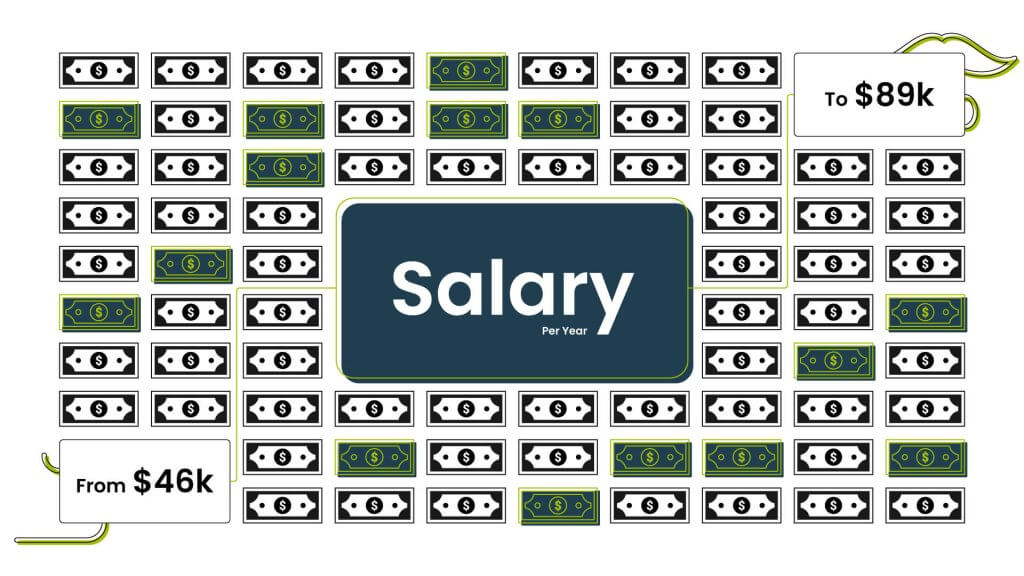
Frequently Asked Questions
What Makes a Good Graphic Designer?
In addition to the above tips that you must follow, you need to have a few little things that will make you not only a good graphic designer but an excellent one.
- Enjoy the process: No one is born knowing everything – it takes time. Be patient and try to be open to learning.
- Be a team player: Listen and learn, everyone has different strengths, and if you work together with your client and listen to them, you’ll succeed.
- Big picture mindset: Sometimes, you’ll have to work on a single material, but remember that this material could be part of a bigger project and will impact more people than you think.
- Take care of yourself: Being a graphic designer takes many sedentary hours in front of a monitor, especially if you’re a freelancer, as you’ll work from home. So, be sure to stretch yourself, go for a short walk, drink water, rest your eyes, and do everything that you need to stay healthy.
- Take risks: The world is for the unique ones, feel free to go for it. In your professional life, you’ll be working based on briefs but be sure that you leave your mark on every project that you take. In the future, people will look at a design and think: only one person could do it this way.
- Be professional, be you: As a freelance graphic designer, you’ll face a lot of projects and maybe a lot of companies with different teams, so the best business card to succeed is to be yourself and always respect others. Always present your best self, personally and professionally.
Here at HostPapa, for example, we want to see designers that not only know how to use the design tools but rather someone with that X factor that can bring to the company some creativity, showing that they are capable of adapting to the different styles. Keep that in mind!
Are Studies Important for a Freelance Graphic Designer?
Many talented graphic designers have probably never set foot in a classroom, and they’re successful professionals. Attending college, taking courses, or a certificate that allows you to act as a graphic designer helps a lot in the theoretical part, history, fundamentals, and techniques used.
However, being self-taught, you can achieve the same results as someone with a college education. You just need to read and practice a lot more. The path will be more difficult, but you can get there.
Are There Different Types of Graphic Designers?
There are graphic designers hired for a company or agency to perform in a certain role, depending on the designer’s speciality, and there are freelancers who can also work for companies but accept freelance jobs on the side to increase income.
Over time, if freelancing jobs increase and income is higher than your company’s salary, people leave the company just to be freelancers.
Is Graphic Design a Growing Field?
The field of graphic design is vast and diluted these days. Businesses need more visual communication than ever.
Think with me, every company that sells a product works with sponsorship, right? These ads need images, videos, and animations to communicate with the audience. The work of a graphic designer is essential, and the demand is very high. Therefore, it’s a branch that grows more and more.
What Is the Salary for a Graphic Designer?
According to Payscale, the lowest pay for a Graphic Designer is $35k per year.
Experience time counts a lot in these hours, whether to be hired by a company or to charge for a freelance job, that is your case.
A base salary for graphic designers is between $46k – $89k per year. The average senior graphic designer’s salary is $25.69 an hour and $64,292 per year.
Let’s Render Up
Phew, we talked a lot about how to be a freelance graphic designer. Did you write down the tips? Working as a freelancer has always been there, and the pandemic has made it even stronger.
If you are thinking about becoming one, we hope you enjoyed this article and that this will be the kick-off for you to start this interesting career.
When you create your website to put up your beautiful portfolio, post it here in the comments for Papa Team to take a look at!
